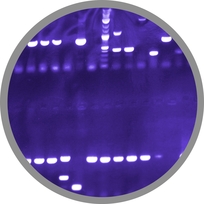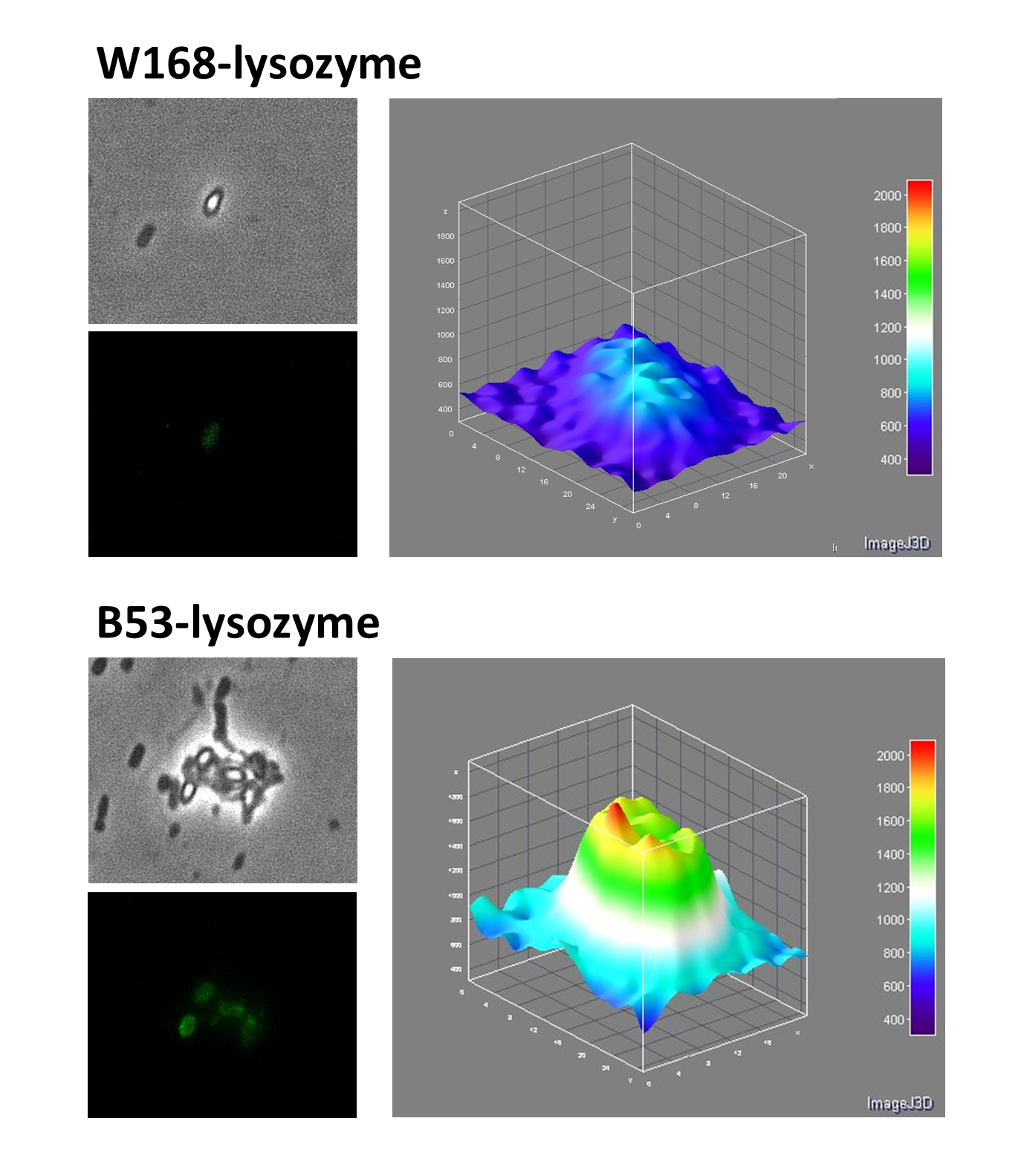Team:LMU-Munich/Data/Sporepurification
From 2012.igem.org
| (One intermediate revision not shown) | |||
| Line 10: | Line 10: | ||
| - | <p align="justify">To be able to use our '''Sporo'''beads, we have to make ensure that all remaining vegetative cells in the culture need to be | + | <p align="justify">To be able to use our '''Sporo'''beads, we have to make ensure that all remaining vegetative cells in the culture need to be thoroughly removed. In order to purify our spores, we treated culture samples that were grown for 24 hours in Difco Sporulation Medium (see [https://static.igem.org/mediawiki/2012/e/e9/LMU-Munich_2012_Protocol_for_enhancement_of_mature_spore_numbers.pdf protocol for enhancement of mature spore numbers]) with three different methods: French Press, sonification and lysozyme. The results are shown in the following table.</p> |
| Line 68: | Line 68: | ||
| - | <p align="justify">The data demonstrates that after treatment with French Press and ultrasound the number of spores compared to the untreated samples were increased. We assume this to be an experimental artifact, since it was not always possible to distinguish between mature spores and cell debris during counting. However, a huge difference between the number of vegetative cells and spores was observed for lysozyme-treated samples as visualized in the pictures below (Fig. 1). Because the vegetative cells,it was easy to recognize the mature spores. | + | <p align="justify">The data demonstrates that after treatment with French Press and ultrasound (sonification) the number of spores compared to the untreated samples were increased. We assume this to be an experimental artifact, since it was not always possible to distinguish between mature spores and cell debris during counting. However, a huge difference between the number of vegetative cells and spores was observed for lysozyme-treated samples as visualized in the pictures below (Fig. 1). Because the lysed vegetative cells, it was easy to recognize the mature spores. |
</p> | </p> | ||
| Line 86: | Line 86: | ||
| - | <p align="justify">Next, we tested the fluorescence of | + | <p align="justify">Next, we tested the fluorescence of '''Sporo'''beads after lysozyme treatment. This analysis revealed that lysozyme did not harm the gfp-fusion proteins, since fluorescence was not altered (see Fig. 2).</p> |
Latest revision as of 13:37, 26 October 2012

The LMU-Munich team is exuberantly happy about the great success at the World Championship Jamboree in Boston. Our project Beadzillus finished 4th and won the prize for the "Best Wiki" (with Slovenia) and "Best New Application Project".
[ more news ]

Sporobead purification
To be able to use our Sporobeads, we have to make ensure that all remaining vegetative cells in the culture need to be thoroughly removed. In order to purify our spores, we treated culture samples that were grown for 24 hours in Difco Sporulation Medium (see protocol for enhancement of mature spore numbers) with three different methods: French Press, sonification and lysozyme. The results are shown in the following table.
| all cells | mature spores | immature spores | |
|---|---|---|---|
| untreated wildtype | 7.29 x 108 /ml | 1 x 108 /ml 13.71% | 0.04 x 108 /ml 0.55% |
| untreated PcotYZ-cotZre-gfp-terminator | 6.79 x 108 /ml | 1 x 108 /ml 14.72% | 0.13 x 108 /ml 1.9% |
| French Press wildtype | 4.87 x 108 /ml | 2.1 x 108 /ml 43% | 0.05 x 108 /ml 1% |
| French Press PcotYZ-cotZre-gfp-terminator | 4.75 x 108 /ml | 1.88 x 108 /ml 39.58% | 0.05 x 108 /ml 1% |
| Sonification wildtype | 4.6 x 108 /ml | 1.22 x 108 /ml 26.52% | 0.1 x 108 /ml 2% |
| Sonification PcotYZ-cotZre-gfp-terminator | 6.72 x 108 /ml | 1.53 x 108 /ml 22.77% | 0.23 x 108 /ml 3% |
| Lysozyme wildtype | 2.48 x 108 /ml | 1.58 x 108 /ml 63.7% | 0 /ml |
| Lysozyme PcotYZ-cotZre-gfp-terminator | 1.05 x 108 /ml | 1.05 x 108/ml 100% | 0 /ml |
The data demonstrates that after treatment with French Press and ultrasound (sonification) the number of spores compared to the untreated samples were increased. We assume this to be an experimental artifact, since it was not always possible to distinguish between mature spores and cell debris during counting. However, a huge difference between the number of vegetative cells and spores was observed for lysozyme-treated samples as visualized in the pictures below (Fig. 1). Because the lysed vegetative cells, it was easy to recognize the mature spores.
|
Next, we tested the fluorescence of Sporobeads after lysozyme treatment. This analysis revealed that lysozyme did not harm the gfp-fusion proteins, since fluorescence was not altered (see Fig. 2).
|
 "
"






